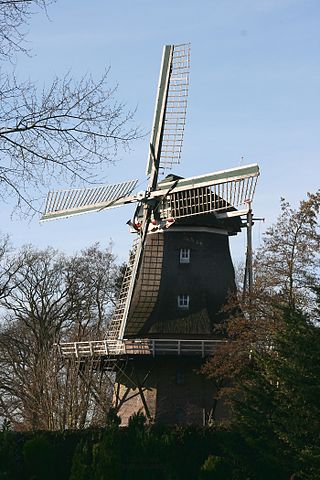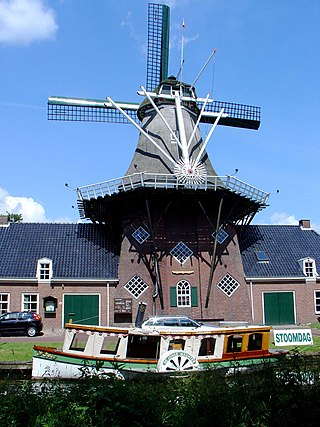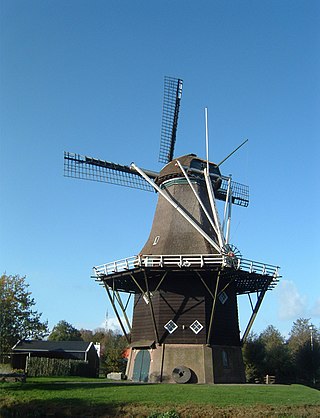
De Heidebloem is a smock mill in Erica, Netherlands. It was built in 1895. The mill is listed as a Rijksmonument, number 14962.

Albertdina is a smock mill in Noord-Sleen, Netherlands. It was built in 1906 and is listed as a Rijksmonument, number 33783.

De Hoop is a smock mill in Norg, Drenthe, the Netherlands. It was built in 1857 and is listed as a Rijksmonument, number 30781.

De Wachter is a smock mill in Zuidlaren, Drenthe, which has been restored to working order. The mill was built in 1851 and is listed as a Rijksmonument, number 41064.

Windlust is a smock mill in Burum, Friesland, Netherlands which was built in 2014, replacing an earlier mill that had burnt down on 8 April 2012.

Zeldenrust is a smock mill in Dokkum, Friesland, Netherlands which was built in 1862 and has been restored to working order. The mill is listed as a Rijksmonument, number 13097. The name translates as, "Seldom at rest."

Welgelegen or Tjepkema's Molen is a smock mill in Heerenveen, Friesland, Netherlands, which was built in 1849 and has been restored to working order. The mill is listed as a Rijksmonument, No. 21171.

Penninga's Molen or De Jonge Wester is a smock mill in Joure, Friesland, Netherlands which was built in 1900 and is working for trade. It is also used as a training mill. The mill is listed as a Rijksmonument, number 20842.

De Ropta is a smock mill north of Metslawier, Friesland, Netherlands which was built in 1840 and is in working order. The mill is listed as a Rijksmonument.

De Hond is a smock mill in Paesens, Friesland, Netherlands which was built in 1861 and is in working order. The mill is listed as a Rijksmonument.

De Korenaar is a smock mill in Sexbierum, Friesland, Netherlands which was built in 1868 and is in working order. The mill is listed as a Rijksmonument.

De Onderneming is a smock mill in Witmarsum, Friesland, Netherlands which was built in 1850 and is in working order. It is used as a training mill. The mill is listed as a Rijksmonument.

De Drie Waaien is a tower mill in Afferden, Gelderland, Netherlands which was built in 1869 and is in working order. The mill is listed as a Rijksmonument.

Schoonoord is a tower mill in Alverna, Gelderland, Netherlands, which was built in 1887 and is in working order. The mill is listed as a Rijksmonument.

De Vrijheid is a tower mill in Beesd, Gelderland, Netherlands which was built in the 18th century and is in working order. The mill is listed as a Rijksmonument.

The Braamse Molen or Koenders Möl is a tower mill in Braamt, Gelderland, Netherlands which was built in 1856. One of only two mills in the Netherlands fitted with Beckers sails, the mill is listed as a Rijksmonument.

De Prins van Oranje is a tower mill in Bredevoort, Gelderland, Netherlands which was built in 1870 and has been restored to working order. The mill is listed as a Rijksmonument.

Bronkhorstermolen is a tower mill in Steenderen, Gelderland, Netherlands which was built in 1844 and has been restored to working order. The mill is listed as a Rijksmonument.

Johanna, De Korenbloem or De Molen van Schennink is a tower mill in Culemborg, Gelderland, Netherlands which was built in 1888 and has been restored to working order. The mill is listed as a Rijksmonument.

De Vlinder is a tower mill in Deil, Gelderland, Netherlands which was built in 1913 and has been restored to working order. The mill is listed as a Rijksmonument.





















